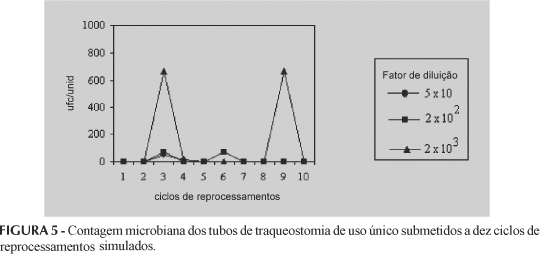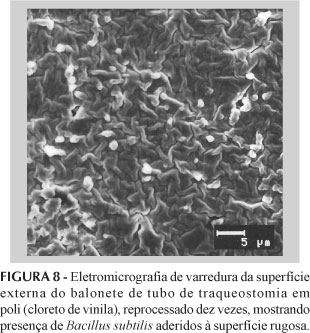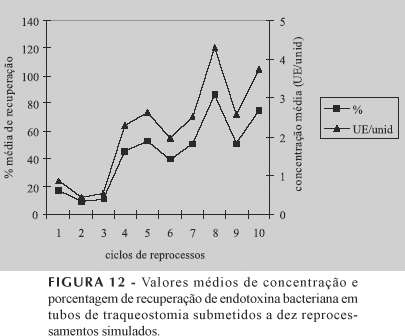The risk/benefit associated with reprocessing practice of single use medical devices had been evaluated through two simulated challenges: one with spores of Bacillus subtilis and other with bacterial endotoxin of the Escherichia coli, in specimen samples represented by intravenous catheters, three-way stopcocks and tracheostomy tubes. The selected devices (300 units) were intentionally contaminated with B. subtilis (10(7) cfu/device) and other group of 90 devices contaminated with bacterial endotoxin (200 EU/device). The B. subtilis contaminated specimen samples had been washed, rinsed, dried and sterilized with ETO/CFC 12:88. Those contaminated with bacterial endotoxin had been submitted to drying, repacking and sterilization. After each cycle, ten units, contaminated with B. subtilis, had been evaluated by microbial counting test, sterility test, in vitro cytotoxicity and scanning electron microscopy. Those contaminated with bacterial endotoxin, three units of each specimen sample, had been submitted to the turbidimetric test, after each cycle. Amongst the units challenged with B. subtilis, viable load of 10³cfu was verified, surface damages were noticed on the specimen samples after tenth reprocessing cycles, but no toxicity was observed. In the other challenge, a gradual increase in recovered percentage of bacterial endotoxin was verified. Taking into consideration the obtained results, we do not recommend reprocessing of single use medical devices.
Medical devices; Reuse; Reprocess; Bacillus subtilis; Ethylene oxide; Bacterial endotoxina














